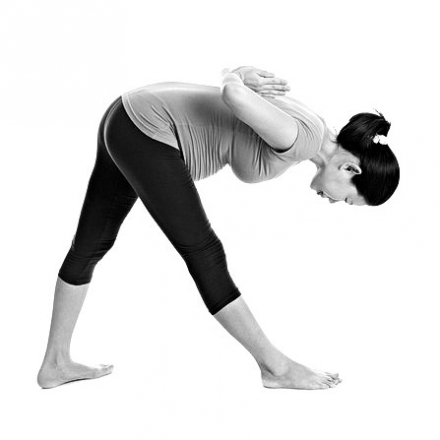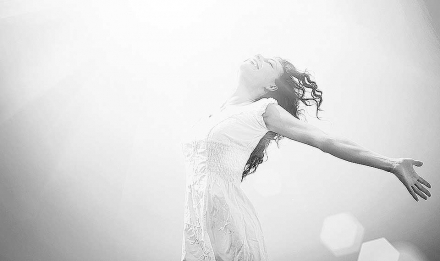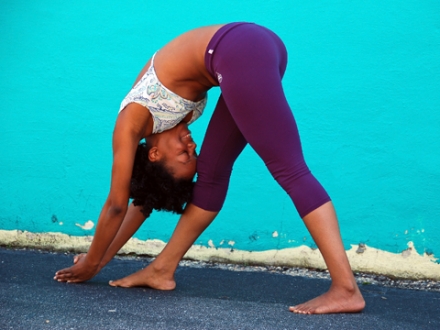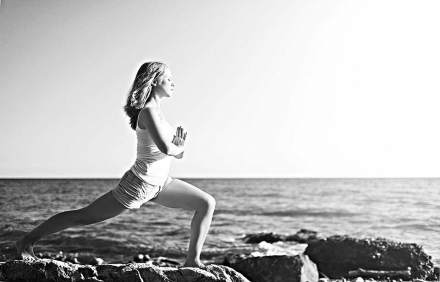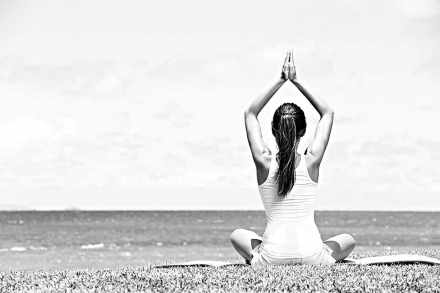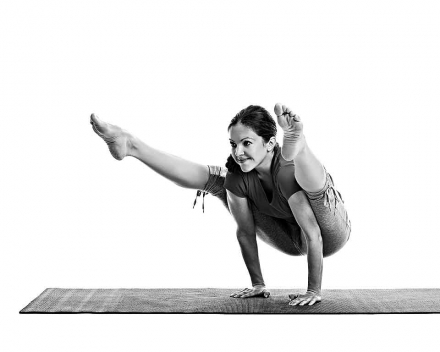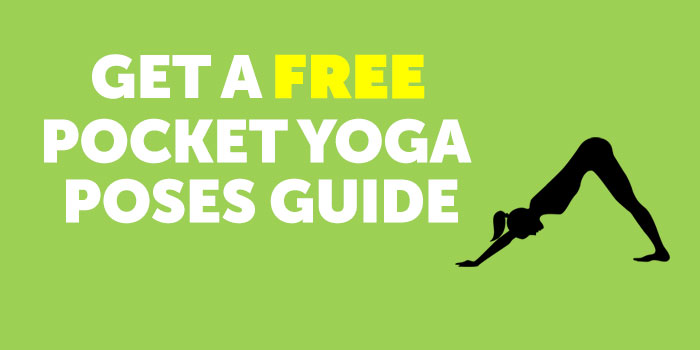In today’s fast-paced and high-stress society, finding a balance between work, personal life, and self-care is often challenging. Amidst these pressures, it’s easy to forget to pause, breathe, and center ourselves. This is where yoga comes in. Yoga, a centuries-old practice, is more than just a form of exercise. It’s a holistic approach that promotes overall wellness, improving concentration and significantly reducing stress levels.
From the sun-salutation routine to the warrior pose, yoga incorporates a variety of techniques that are specifically designed to calm the mind, enhance focus, and promote relaxation. Each pose or asana is coupled with controlled breathing and mindful meditation, creating a perfect harmony between the mind and body. So, join us as we delve into the world of yoga and explore the various techniques that can help you manage stress, improve concentration, and ultimately lead a healthier, more balanced life.
Introduction to Yoga
Yoga, an ancient practice, has multiple benefits. The Benefits of Yoga for Stress and Concentration are extensive, offering mental tranquility and focus. It also has numerous Health Benefits, such as improving cardiovascular health, flexibility, and strength. If you’re a newbie, don’t worry! We have a guide on Yoga Postures for Beginners. We’ll delve into Yoga Breathing Techniques to regulate your prana or life force. Lastly, we’ll explore Yoga Meditation Practices, a tool for deeper self-awareness. So, let’s dive into the fascinating world of Yoga!
The Benefits of Yoga for Stress and Concentration
Envision yourself in a tranquil sanctuary, where the rush of the world fades away and peace blankets your being. As we delve into the world of Yoga, this is not just a figment of your imagination but a reachable reality. Especially meaningful in our fast-paced lives, Yoga offers a safe haven from the storm of stress. It does so by promoting mindfulness, urging us to focus on the present moment and push aside intrusive thoughts.
Yoga not only alleviates stress but also significantly enhances concentration. Whether you’re a student grappling with a mountain of homework or an executive juggling important projects, Yoga can be your secret weapon. The calming postures and breathing techniques foster a sense of inner balance, clearing your mind and allowing for increased focus. Practice Yoga regularly, and you’ll find yourself navigating life’s challenges with a newfound serenity and sharpness!
Remember, tranquility is not a destination, but a journey. And Yoga could be your most joyous ride.
Health Benefits of Yoga
Stepping away from the historical origins of yoga, let’s delve into the realm of its numerous health benefits. Practicing yoga does more than just improve your flexibility, it’s a holistic approach to wellness. Yoga can help to boost your immune system and reduce your risk of chronic diseases such as diabetes, heart disease, and cancer. By improving your blood circulation and maintaining a balanced metabolism, yoga keeps your body functioning optimally.
But the benefits don’t stop there. Yoga can also relieve your body of toxins through increased perspiration, aiding in detoxification. It improves your respiratory, digestive, and circulatory system, promoting overall good health. It’s a wonderful way to support your body’s natural healing process and maintain a healthy lifestyle.
What’s more, yoga can also help to improve your sleep. Studies have shown that regular yoga practice can help fight insomnia and ensure you wake up feeling refreshed and energized. It’s a health booster that’s hard to beat!
Yoga Postures for Beginners
Dipping our toes into the tranquil waters of yoga, let’s navigate the Yoga Postures for Beginners. This is where every aspiring yogi starts their journey, and it’s as exciting as it is beneficial.
Firstly, we have the Mountain Pose (Tadasana). It may seem simple, but it’s the foundation for all standing poses in yoga, improving posture, balance, and calm focus. Next, there’s the Child’s Pose (Balasana), a resting pose that can help quiet the mind, easing stress and anxiety while gently stretching the back. The Warrior I (Virabhadrasana I) is another basic pose that strengthens your legs while improving balance and stability.
Lastly, the Tree Pose (Vrikshasana) tests your balance while strengthening your legs and core. It’s a perfect example of the balance of strength and grace that yoga embodies. Remember, every yogi began at the start line.
Pranayama (Controlled Breathing)
Pranayama, or controlled breathing, is a powerful technique with many styles. We’ll explore the Types of Pranayama Techniques, each offering unique benefits. Then, we’ll dive into Simple Pranayama Exercises; easy routines you can start today. We’ll also look at how Pranayama can enhance focus with Pranayama for Improved Focus. We’ll then weave these techniques into your yoga practice with Integrating Pranayama with Yoga. Finally, if you’re new to this, we have Pranayama for Beginners.
Types of Pranayama Techniques
Now that we’ve stretched our bodies and opened our minds with yoga, let’s add another layer to our practice – the ancient art of Pranayama. Pranayama, a Sanskrit word meaning “extension of the prana or breath”, is a form of controlled breathing that helps to enhance our physical and mental wellbeing.
There are many types of Pranayama techniques that you can incorporate into your yoga practice, each with their own unique characteristics and benefits. Some of the popular ones include Anulom Vilom (alternate nostril breathing), Kapalbhati (skull shining breath), Bhastrika (bellows breath), and Ujjayi (victorious breath). The choice of technique can depend on your personal preference, your health, and the specific goals you have for your practice.
So, let’s dive in, explore these techniques, and unlock the numerous health benefits of Pranayama!
Simple Pranayama Exercises
Just as a river smoothly transitions from a tranquil flow to a powerful waterfall, let’s move from the calm introduction of yoga to the dynamic world of Pranayama. Today, we’re diving into some simple Pranayama exercises that you can practice at home.
Firstly, there’s the Anulom Vilom, or alternate nostril breathing. It’s just like it sounds—you close one nostril, breathe through the other, switch and repeat. It’s a lovely little exercise that helps balance your mind and body.
Next up is the Bhramari, or humming bee breath. You close your eyes, cover your ears and make a humming sound while exhaling. It sounds a bit quirky, but it’s a fun way to reduce stress and tension.
Remember, the key to Pranayama is slow, controlled breathing. Take your time, enjoy the journey, and before long you’ll be mastering these techniques with a big smile. So, take a deep breath, and let’s dive in!
Pranayama for Improved Focus
As we delve deeper into the serene world of yoga, let’s transition to the invigorating practice of Pranayama. Imagine a world where you can effortlessly tune out distractions, where your mind is completely uncluttered, allowing you to focus like never before. This is what Pranayama can offer you.
One particular technique is the Nadi Shodhana, or alternate nostril breathing. This age-old practice is known for its ability to bring balance and harmony to the mind, enhancing concentration and focus. To perform Nadi Shodhana, sit comfortably and alternate breathing through each nostril, blocking the unused one gently with your thumb or finger.
An important tip to remember is that slow and steady wins the race. Take your time, breathe deeply, and keep your mind centered on the breath. With continued practice, you’ll notice a marked improvement in your ability to concentrate, not just during your yoga sessions, but in every aspect of your life. So, why not give it a try?
Yogic Postures (Asanas)
Let’s joyfully explore Yogic Postures (Asanas) together! We’ll start with Different Postures for Different Levels of Experience, making yoga accessible to all. Moving on, we’ll delve into the Top Postures for Concentration, helping you harness your mind’s potential. We’ll also discuss the Role of Asanas in Stress Reduction, showing you how to find calm amidst chaos. Additionally, we’ll stress the Importance of Proper Alignment in Asanas, ensuring your practice is safe and effective. Lastly, we’ll blend stillness and movement by Incorporating Meditation with Asanas.
Different Postures for Different Levels of Experience
Just as the breath finds its rhythm in the practice of pranayama, our bodies find their own unique flow within the diverse world of yoga postures, or asanas. Now let’s dive into the ocean of asanas, exploring different postures suited for various levels of experience.
Whether you are a beginner, intermediate, or advanced yogi, there’s an asana tailored for your skill level. For beginners, start with simple postures like the Mountain Pose (Tadasana) or the Child’s Pose (Balasana). These poses help to build your foundation and understand the basics of alignment.
Intermediate practitioners may delve into more complex asanas like the Warrior series or the Triangle Pose (Trikonasana), which challenge balance and flexibility.
Finally, advanced yogis can explore intricate postures like the Scorpion Pose (Vrischikasana) or the King Pigeon Pose (Rajakapotasana), which require a higher degree of strength, balance, and flexibility.
Top Postures for Concentration
Just as pranayama helps us breathe better, asanas or yogic postures are the physical aspect of yoga that help us concentrate better. Let’s dive into the top postures that enhance focus and concentration.
Tree Pose (Vrikshasana) helps you find balance, both physically and mentally. This asana requires you to focus your mind on a single point, thus enhancing your concentration levels.
Eagle Pose (Garudasana) is another posture that improves concentration. It requires a high level of focus to maintain the balance and coordination necessary for this pose.
The Warrior II Pose (Virabhadrasana II) is not only a powerful strength builder, but it also increases concentration and stamina. It necessitates intense focus on your body, alignment, and movement, thereby sharpening your concentration.
The beauty of these asanas is that they make you mindful of the present moment, which is a key factor in improving focus and concentration. So, shall we try these postures today for a more concentrated mind?
Role of Asanas in Stress Reduction
Just as we master the rhythm of our breath, we can also harness the power of asanas, yoga postures, to balance our body and mind. This section now turns its spotlight on the Role of Asanas in Stress Reduction.
The world we live in is fast-paced and stress is something we all deal with. Asanas, my friends, could be your secret stress-buster. These physical postures not only stretch and tone your muscles but can also calm your mind, helping you to release accumulated tension and anxiety.
Ever heard of the child’s pose or Balasana? This relaxing pose is a perfect example of an asana for stress reduction. While in this pose, you focus on your breath, gently stretching your back and neck, which are common areas we tend to hold tension.
So, the next time you feel stressed, don’t reach for the ice cream tub, instead reach for your yoga mat. You’ll be surprised at the sense of calm and tranquility you’ll achieve.
Meditation
Let’s delve into the calming world of Meditation. Initially, we’ll explore various Techniques for Concentration and Stress Reduction to help you remain focused and relaxed. Then, we’ll specifically focus on Meditation for Stress Reduction, a powerful tool for inner peace. This will lead us to Mindfulness Meditation, enabling us to live in the present moment. We’ll also discuss the numerous Benefits of Meditation that enhance our overall wellbeing. Finally, we’ll guide you through different Meditation Techniques to help you find the one that suits you best. So, let’s embark on this tranquil journey together!
Techniques for Concentration and Stress Reduction
While Yogic Postures (Asanas) set the groundwork for physical wellness, the essence of yoga goes beyond the physical realm. It’s time now to explore the mental and spiritual aspects, starting with Techniques for Concentration and Stress Reduction.
Meditation, as we all know, is a powerful tool for focusing the mind and alleviating stress. But, let’s get a bit more specific. Deep Breathing is a simple yet effective technique to start with. It involves inhaling deeply, holding the breath for a few seconds, and then exhaling slowly. This practice not only calms the mind but also regulates the body’s response to stress.
Another technique that works wonders is Visualisation. Here, you create serene images in your mind, which takes your mind off worries and helps you concentrate.
Remember, friend, the key to successful meditation and stress reduction lies in the practice. So, let’s dive deep into this peaceful world of meditation.
Meditation for Stress Reduction
As we gently transition from the physical realm of yogic postures to the more subtle realm of the mind, let’s delve into the power of Meditation for Stress Reduction. Just as asanas help in bringing balance to the body, meditation aims at instilling peace and tranquility in the mind.
There’s no denying that we live in a world where stress is a constant visitor. However, through meditation, we invite calmness into our life. Picture this, you’re sitting in a quiet room, eyes closed, focusing on your breath as you inhale and exhale. Gradually, the mental chatter begins to fade away, tension melts, and you’re left basking in a state of serene relaxation.
Meditation for stress reduction is not about pushing away stress, but acknowledging it and letting it go in a controlled and gentle manner. The result? A calmer, happier you, ready to face life’s challenges with a smile. How wonderful is that?
Mindfulness Meditation
As we gently transition from the physical realm of yogic postures into the serene landscape of the mind, we encounter the profound practice of Mindfulness Meditation. This practice is like a dear friend, always present to listen, understand, and comfort you.
Mindfulness Meditation is a type of meditation that encourages you to focus on the present. It’s a friendly nudge reminding you to ‘stay in the moment’. It isn’t about silencing your thoughts, but rather acknowledging them without judgment or reaction. It’s about learning to be an impartial observer of your own mind.
Imagine your thoughts as clouds floating in the sky. Some clouds are fluffy and pleasant, others might be stormy and dark. The sky doesn’t resist or cling on to any cloud, it just observes. That’s what you aim to do in Mindfulness Meditation.
This practice not only soothes your mind but also fosters a deep sense of self-awareness and compassion. It’s like giving yourself a warm, friendly hug from within.
Yoga Nidra
Welcome to the world of Yoga Nidra! Let’s embark on a journey to A Deep State of Relaxation, where we’ll explore the magic of achieving tranquility. Next, we’ll delve into the numerous Benefits of Yoga Nidra, from physical wellness to mental clarity. We’ll then focus on Yoga Nidra for Stress Reduction, an effective remedy in our high-pressure society. Afterwards, we’ll walk you through the Steps in Yoga Nidra, helping you master this ancient practice. Finally, we’ll highlight how Yoga Nidra for Sleep can revolutionize your nights.
A Deep State of Relaxation
Just as meditation helps calm the mind, there’s another powerful, yet often overlooked practice, known as Yoga Nidra – a method that takes you to a deep state of relaxation. Imagine being in a state of tranquillity so profound that even your mind gets to vacation! Yoga Nidra, often referred to as yogic sleep, is a practice that helps the practitioner achieve an intense relaxation state, which is between wakefulness and sleep. This practice allows your body to relax deeply while your mind remains inwardly alert. It’s not about falling asleep; rather, it’s about experiencing and recognizing the deep restful state that exists between sleep and wakefulness. This fascinating realm of deep relaxation is not just about physical stillness, but achieving a potent state where our mind can unwind and our body can rejuvenate. So, are you ready to embark on this journey of deep relaxation with Yoga Nidra?
Benefits of Yoga Nidra
As we gently float away from the tranquil realm of meditation, we warmly welcome you into the comforting embrace of Yoga Nidra. Now, let’s dive into the numerous benefits of Yoga Nidra that make it worth practicing.
Yoga Nidra, often referred to as ‘yogic sleep’, is a powerful tool that can work wonders for your physical and mental health. It holds the key to the door of deep relaxation, where your body can heal and rejuvenate. This makes it an excellent practice for those looking to improve their overall well-being.
Regular practice of Yoga Nidra can stimulate your creativity, making you more open to the wonderful surprises that life has to offer. It has also been known to reduce anxiety and depression, fostering a sense of peace and tranquillity within.
Moreover, Yoga Nidra helps improve focus and enhances memory, making it a fantastic tool for both students and professionals. So why wait? Unlock these amazing benefits with Yoga Nidra!
Yoga Nidra for Stress Reduction
Just as a calm river smoothly transitions into a tranquil ocean, let’s allow our focus to gently shift from meditation to the soothing practice of Yoga Nidra.
In the whirlwind of our fast-paced lives, stress can often become a constant, unwelcome companion. That’s where Yoga Nidra comes in handy for stress reduction. Imagine being able to access a deep state of relaxation, where your mind is at ease, and your body is completely rested. Sounds wonderful, doesn’t it? During a Yoga Nidra session, you are guided into a state of conscious sleep, which allows you to let go of any tension, anxiety, and stress. It’s like hitting a ‘reset’ button for your mind and body.
With regular practice, Yoga Nidra can help you manage daily stress more effectively, promoting a healthier, happier you. So why not give Yoga Nidra a try? After all, we all could use a little more relaxation and peace in our lives!
Mantra
Let’s delve into the fascinating world of Mantras. We’ll first explore how Chanting for Stress Reduction and Concentration helps relax the mind. Next, we’ll see how specific Mantra for Concentration Improvement can aid in better focus. We’ll then guide you on Using Mantras in Daily Practice, making it a part of your routine. Further, we’ll discuss the many Benefits of Mantra Meditation for overall well-being. Lastly, we’ll share some effective Techniques for Mantra Meditation to maximize the benefits. Let’s journey together into this calming and beneficial practice.
Chanting for Stress Reduction and Concentration
Shifting gears from the tranquil practice of Yoga Nidra, let’s explore the invigorating world of mantras and how they can help you combat stress and foster concentration. Ever felt overwhelmed by the whirlwind of thoughts and worries? That’s where chanting mantras can be a game-changer!
Chanting, an age-old practice, is much like a mental workout. It reduces stress by calming your mind and shutting down those pesky, distracting thoughts. Concentration, on the other hand, is equally benefited as chanting requires a focused mind. Just as you tune into a melodious song, tuning into a mantra can help you center your attention and improve your concentration.
Beyond just a religious or spiritual practice, chanting mantras is a powerful tool for stress reduction and concentration improvement. So, whether you are seeking peace amidst chaos or looking to enhance your focus, give mantra chanting a try. You’ll be surprised how energizing it can be!
Mantra for Concentration Improvement
As we bid adieu to the calming tranquility of Yoga Nidra, let’s turn our focus to the powerful and invigorating world of mantras. Embracing the same principle of harnessing your inner energy, mantras take it a step further by improving concentration and sharpening our minds.
Mantras for concentration improvement are an absolute gem. They are simple yet powerful phrases that you can repeat either silently or aloud. They work by training your mind to focus on a single point, cutting through the noise of external distractions and internal chatter.
One popular mantra for concentration is Om. Simple, yet powerful, it’s believed to represent the sound of the universe. Repeating it can help align your energy with the energy of the cosmos, promoting focus and clarity.
Try incorporating mantras into your everyday life. Whether during a break at work, or in the quiet early hours of the morning, you’ll quickly notice a heightened sense of concentration and mindfulness. Such is the power of mantras!
Using Mantras in Daily Practice
As we transition from the tranquility of Yoga Nidra, let’s dive into the vibrant world of mantras and see how we can incorporate them into our everyday lives. Using mantras in daily practice can be a real game changer. Start your day with a positive mantra to set the tone for the day. You can chant your mantra while preparing your morning coffee, or while on your daily commute.
Remember, the power of the mantra lies in the intention behind it. So, whether it’s “I am strong” or “I am calm”, ensure your mantra aligns with your daily goals. As you repeat your mantra, visualize it coming true, trust in the process and let it guide your actions.
At night, try a calming mantra to help you unwind, like “I am at peace”. This practice not only brings a sense of calm but can also improve sleep quality. Go on, give it a try and add some mantra magic to your daily routine.
Chakra Balancing
In our exploration of Chakra Balancing, we’ll first connect to the subtle energy body to understand how chakras work. Then, let’s dive into specific yoga poses that can help balance these energy centers. We’ll also explore various techniques for chakra balancing, including healing and concentration methods. Lastly, we’ll see how having balanced chakras positively influences our mental health. Buckle up for this energizing journey!
Connecting to the Subtle Energy of the Body
Just as mantras give us a spiritual formula to invoke higher energies, it is now time to dive deeper into the realm of self-discovery and healing. Let’s explore Connecting to the Subtle Energy of the Body.
Our bodies are more than just physical entities; they are vibrant fields of energy. The first step towards chakra balancing is to connect with this invisible force within us. This energy, also known as Prana in yogic terms, pervades everything and is the life-giving force that sustains us.
To connect with your Prana, find a quiet space and sit in a comfortable position. Close your eyes and start to focus on your breath. Feel the life force flowing in and out with each breath. Try to visualize this energy filling your entire being, and imagine it as a bright, radiant light. This exercise will not only help you connect with your subtle energy but also prepare your mind and body for chakra balancing. The key is to be patient and kind to yourself during this process!
Yoga Poses for Chakra Balancing
Just as the harmony of words in a mantra can bring tranquility to your mind, yoga poses can harmonize your energy flow and balance your chakras. Let’s now shift our attention towards Yoga Poses for Chakra Balancing.
Practicing yoga is a wonderful way to connect with your inner energy and balance your chakras. For example, the Mountain Pose (Tadasana) is great for grounding and stabilizing the root chakra. The Warrior II Pose (Virabhadrasana II) can be used to unlock and balance the sacral chakra, fostering creativity and emotional well-being.
The Cobra Pose (Bhujangasana) can stimulate the solar plexus chakra, enhancing self-confidence and personal power. The Camel Pose (Ustrasana) opens and balances the heart chakra, fostering love and compassion.
Practicing these poses regularly can help you achieve a sense of balance and harmony within your body.
Techniques for Chakra Balancing
Having experienced the calming rhythm of mantra chanting, let’s now dive deeper into the vibrant world of energy centers, the Chakras. One integral element of this journey is understanding and practicing the various techniques for Chakra balancing.
The first technique is meditation. By focusing on specific areas of the body that correspond to each Chakra, you can clear any blockages and restore balance. Another technique is through the use of healing stones, each resonating with a different Chakra. Placing these stones on your body while lying down can facilitate energy flow.
Then, we have sound healing. Each Chakra responds to a specific sound frequency. Using tuning forks, singing bowls, or even certain music can stimulate and balance your Chakras.
Remember, each of these techniques requires patience and practice. So, stay calm, and let these techniques bring harmony and balance to your Chakras.
Restorative Yoga
We’ll start by discussing how Restorative Yoga helps in Releasing Tension and Restoring Balance. This is closely linked to the myriad Benefits of Restorative Yoga we’ll explore next. Among these benefits, it’s vital to highlight its effectiveness for Stress Relief, providing a tranquil oasis in your hectic day. We’ll also cover how it aids in better Sleep by calming the mind. Finally, a practical Restorative Yoga Sequence will be shared, so you can experience these benefits firsthand!
Releasing Tension and Restoring Balance
In the same vein as chakra balancing, let’s transition into another powerful practice: restorative yoga. This practice is designed to release tension and restore balance in your mind and body.
Restorative yoga is a soothing and nurturing practice that promotes the effects of conscious relaxation. Imagine this: after a long, stressful day, you finally get the chance to unwind. You step onto your yoga mat, and with every pose, you release tension from your muscles, joints, and mind. It’s a time to let go, to breathe, and to find calm in the midst of chaos. What’s more, restorative yoga helps restore balance in your body’s systems which is crucial for overall health.
The practice of restorative yoga is not about exertion, but about relaxation and letting go. In the following sections, we’ll explore more about its benefits and how it aids in stress relief and better sleep. Stay tuned!
Benefits of Restorative Yoga
Having explored the wonders of chakra balancing, let’s now gently transition to another nurturing practice, Restorative Yoga. This type of yoga can be a beautiful complement to chakra work, as it also aims to harmonize and restore balance.
Restorative Yoga is like a healing balm for your body and mind. It promotes deep relaxation and rejuvenation, allowing your body to release tension and restore its natural balance. The slow, thoughtful movements and meditative aspects of Restorative Yoga can also provide tremendous emotional benefits.
Engaging in Restorative Yoga can enhance your mood, reduce anxiety, and improve your overall mental wellbeing. Plus, it’s a fantastic way to increase flexibility and strengthen your body without the strenuous exertion of more intense forms of exercise.
Whether you’re a yoga novice or a seasoned practitioner, the benefits of Restorative Yoga are plentiful. Why not give it a try? Your body and mind will thank you!
Restorative Yoga for Stress Relief
Leaving the realm of chakra balancing, we now step into the calming sphere of restorative yoga. The soft, gentle light of a candle flickers in a tranquil yoga studio, inviting us to unwind and release our stress. Restorative yoga is the perfect antidote for those who feel overwhelmed by life’s pressures.
Restorative yoga for stress relief is like a soothing balm for your weary soul. It allows you to slow down and open your body through passive stretching. By holding poses for longer periods, your muscles relax, and your mind can achieve a state of deep calm. It’s these moments of stillness that help to quiet your mind and shed the weight of stress, leaving you feeling refreshed and revitalized.
Restorative yoga is not about achieving the perfect pose, but about letting go. It’s about allowing your body to find its natural balance and peace. So, the next time you’re feeling stressed, remember to take a pause and step onto your yoga mat.
Conclusion
In conclusion, yoga is a wonderful tool that can help you improve your concentration and reduce stress. With techniques like Pranayama, Asanas, Meditation, Yoga Nidra, Mantra, Chakra Balancing, and Restorative Yoga, you can boost your mental clarity and promote relaxation.
Incorporating these practices into your daily routine can offer remarkable benefits. As you explore these techniques, you’re likely to discover a newfound sense of peace and focus. So, why not give it a shot? Remember, your journey to wellness and tranquility begins with a single yoga pose.
0





